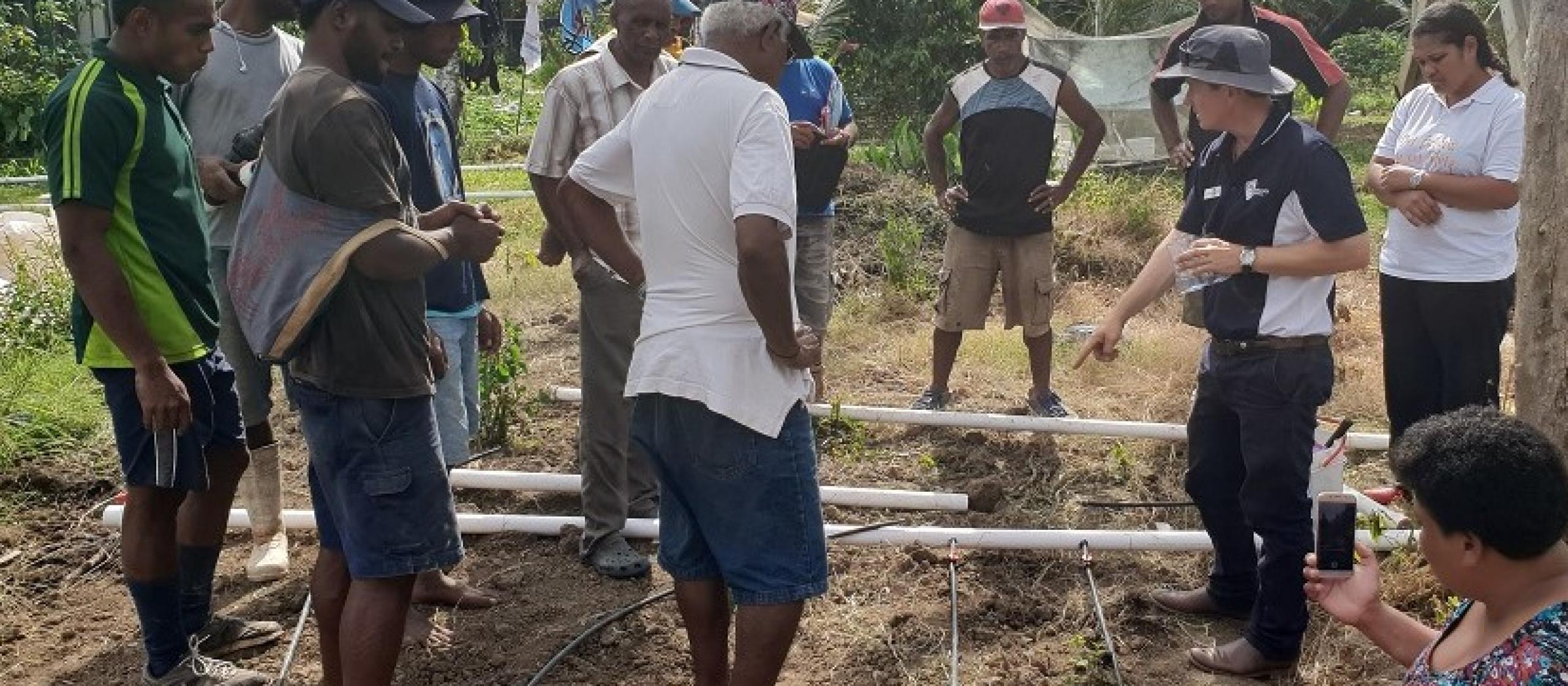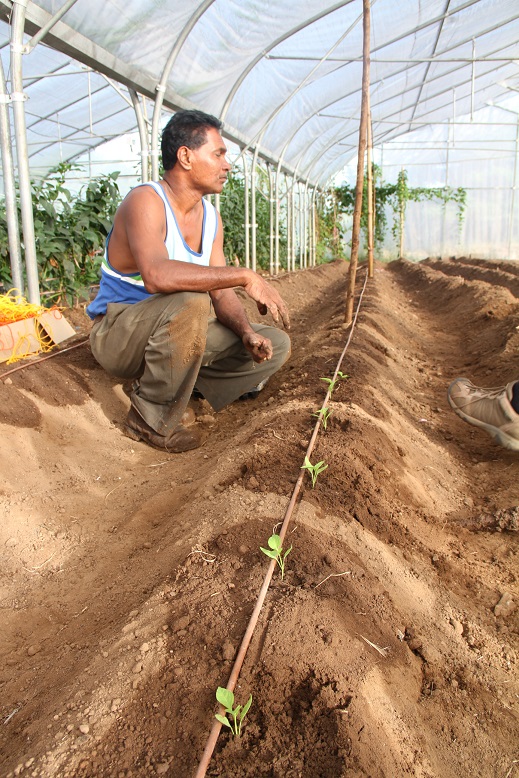- HomeHome
-
About ACIAR
- Our work
- Our people
-
Corporate information
- ACIAR Audit Committee
- Commission for International Agricultural Research
- Policy Advisory Council
- Agency reviews
- Executive remuneration disclosure
- Freedom of information (FOI)
- Gifts and benefits register
- Information publication scheme
- List of new agency files
- Contracts
- Legal services expenditure
- Privacy impact assessment register
- Commonwealth Child Safe Framework
- Benefits to Australia
- Careers
- 40 years of ACIAR
-
What we do
- Programs
- Cross-cutting areas
- Resources
- Where we work
-
Funding
- Research projects
- Fellowships
-
Scholarships
- John Allwright FellowshipScholarships to study in Australia for ACIAR partner country scientists to have Australian postgraduate qualifications
- ACIAR Pacific Agriculture Scholarships and Support and Climate Resilience Program
- Alumni Research Support Facility
- Publications
- News and Outreach
Date released
28 October 2019
A decade ago, Munsami Naicker didn’t think he would ever own a tractor. Now the farmer in Tavua, Fiji, is building a new house and swimming pool, funded by his income from high-value greenhouse crops. ‘The results speak for themselves,’ says Mr Naicker.
Mr Naicker is one of more than 40 direct beneficiaries of the ACIAR-funded project ‘Integrating protected cropping systems into high-value vegetable value chains in the Pacific and Australia’, which has been operating in northern Australia, Fiji, Samoa and Tonga since 2017.
The three and a half year project has two key objectives. Firstly, it promotes the effective use of protective structures, such as greenhouses and walk-in tunnels, to enable farmers to grow high-value crops such as tomatoes, cucumbers and capsicums all year round. The second aim is to help farmers access the lucrative local tourism industry in order to earn a healthy profit by selling their produce directly to hotels and supermarkets.
Currently, small- and medium-scale farmers produce the vast majority of high-value crops in Fiji, Samoa and Tonga. But, since the local growing season lasts for only a few months, farmers can’t produce a steady and reliable enough supply to attract the vibrant tourism industry and end up selling their produce in local markets instead. Meanwhile, hotels and supermarkets import the shortfall, which in Fiji alone numbers several hundred tonnes per year.
Greenhouses have the potential to close the gap between local supply and demand. Unlike the European version of greenhouses, which were created to keep conditions warm in cold environments, in Pacific island countries the ideal versions protect against the region’s harsh wet and dry seasons. ‘[Greenhouses] function like an umbrella over the crop,’ says Professor Phil Brown, an agriculture scientist at Central Queensland University and the project leader. ‘Then you have to put in an irrigation system so crops can grow in the dry season as well.’
Traditionally, there has been limited use of greenhouses in Fiji and Samoa, but that situation has changed quickly in the past few years. That’s due in part to a brief project on protective cropping under the 2009 ACIAR-funded Pacific Agribusiness Research for Development Initiative in which Mr Naicker was also involved, as well as additional investment programs. For instance, Chinese development aid funds have been used to build up to 60 greenhouses in Samoa over a roughly two-year period, says Professor Brown, while the Fijian Government provides farmers with funding for their structures.
The ACIAR project isn’t giving farmers materials to actually build greenhouses. Instead, Professor Brown and his colleagues are conducting key research into the type of protected cropping structures and approaches that work well in the local landscapes and then working with suppliers of inputs (such as fertilisers and irrigation systems) to ensure interested farmers have easy access to these materials.
Part of the project research is being conducted in northern Australia, where project partner Dr Elio Jovicich from the Queensland Department of Agriculture and Fisheries is looking into crop production practices in the Australian tropics, where climatic conditions are similar to those in Pacific island countries. While these places probably use higher-end technology, Dr Jovicich says the same issues and lessons are likely to apply. ‘By figuring out which crop varieties grow well through the research in Australia, that information can help growers in the Pacific,’ he says. Dr Jovicich offers the example of a variety of Lebanese cucumber that ‘grew really well’ in Australian greenhouses so was then introduced by the researchers to a Samoan farmer who in turn offered it in the local market, where it sold ‘like hotcakes’ despite the fact it hadn’t traditionally been marketed in Samoa.
The other component of the research is being conducted in Fiji, Samoa and Tonga. ‘One of the key things we’ve discovered about protected cropping [in these countries] is that there’s probably an overemphasis on the structure itself,’ says Professor Brown. Farmers don’t think about other essential parts of protected cropping, such as which crop varieties are best suited to greenhouses and which pest management strategies work best. When crops don’t grow well because the farmers haven’t learned the necessary skills or because a hurricane flattens the greenhouses and their owners don’t have the necessary tools to repair them, the end result is the same: the structures are abandoned.
That’s why in promoting a holistic approach to protected cropping, Professor Brown and his colleagues have come up with an analogy that incorporates the kava bowl: a ceremonial instrument used in many Pacific island countries. In the analogy the bowl represents the potential return that can be gained from the protected cropping system, with larger bowls able to hold greater volumes. The four legs holding up the bowl represent the four essential elements of greenhouse farming: the physical infrastructure (the greenhouse design, materials and associated equipment used in production); the crop agronomy (management of the crop, including varietal selection, pruning, training, irrigation and fertiliser use); the management of pests and diseases; and the value chains that link production to market.
To prevent the bowl tipping over, all legs need to be present and proportional. As the size of the bowl increases so must the length of each leg, representing the resources, knowledge and skills needed in each area.
The analogy is informing the researchers’ crop production trials, which continue to be conducted at demonstration sites in Fiji and Samoa established in a previous ACIAR-supported project. Planned sites in Tonga are still not operational due to cyclone damage but are expected to be constructed soon. The sturdiness of the greenhouses in Fiji and Samoa—despite moderate damage having been caused by cyclones—was ‘valuable’ in promoting the viability of protected cropping in these countries, says Professor Brown.
These facilities are not the small-scale low-cost structures that farmers are likely to build when they first try protective cropping. These high-spanned greenhouses are owned by commercial growers and contain key features, such as a roof vent to allow hot air to escape and a plastic covering that can easily be detached when strong winds are expected to prevent the structure’s metal frame being damaged.
The decision to take farmers to view a commercial greenhouse was intentional. ‘Farmers say, “Yeah that has to do with the Department of Agriculture; that’s not farming”,’ explains Professor Brown. ‘But if they go to another farmer’s property to see a structure, and the farmer who owns it can explain to them what works, what doesn’t and what they’ve done, that is a really fantastic resource for the rest of the community.’
In terms of the third leg—pest and disease—Professor Brown is working closely with another ACIAR project run by Mike Furlong from the University of Queensland. ‘There’s a network of plant health experts in the Pacific who are supported by that project who are now engaging with us,’ says Professor Brown. He points to nematodes in the soil as one particularly problematic pest found in greenhouses in Fiji, and broad mites pop up in capsicum crops.
But, Professor Brown says the hardest leg to work through is the fourth one: access to market. The skills needed to grow crops are very different from the ones necessary to effectively sell to high-value markets, and different value chains require different skills and approaches.
One model the study has evaluated is the Participatory Guarantee Scheme. A key hurdle that smallholder farmers face in accessing markets is being able to produce vegetables in large enough quantities to attract premium markets like resorts. Guided by project partner Sunshine Coast University, each Participatory Guarantee Scheme farmer group forms a government-registered company with sufficient capacity to fulfill its resorts’ demands. ‘That seems to have worked quite well,’ says Professor Brown, who adds, however, that for the model to succeed one of the farmers or another community member needs to be able to work effectively with the tourism industry. ‘It is a bit of a weakness,’ he concedes. ‘We’re still doing more research to better understand which approach is best to help farmers shift from a production mindset to a commercial one.’
When all is said and done, the researchers want to make sure the lessons learned extend well beyond the end of the project. That’s why they have been developing a training program with the Ministries and Departments of Agriculture in Fiji, Samoa and Tonga centred on the kava bowl and its four legs. The researchers intend local government employees to use that information to develop and administer their own set of training for local farmers. ‘We’re trying to really build the local capacity, local knowledge and ownership of the training within the Ministries, the Departments of Agriculture and the commercial farmers of the demonstration sites so that when the project finishes they will still be there,’ says Professor Brown. ‘It will be the legacy of the project.’






